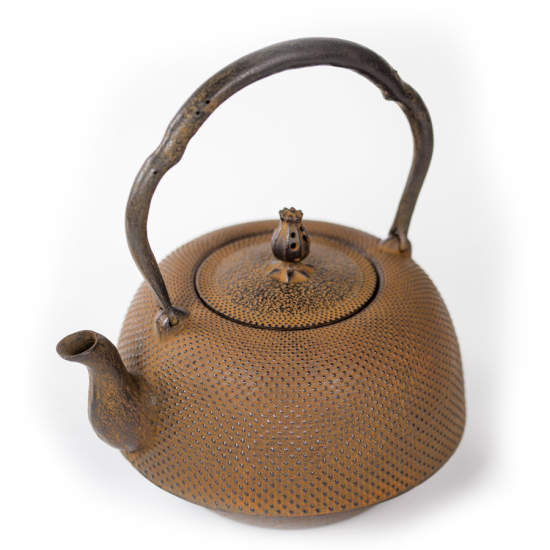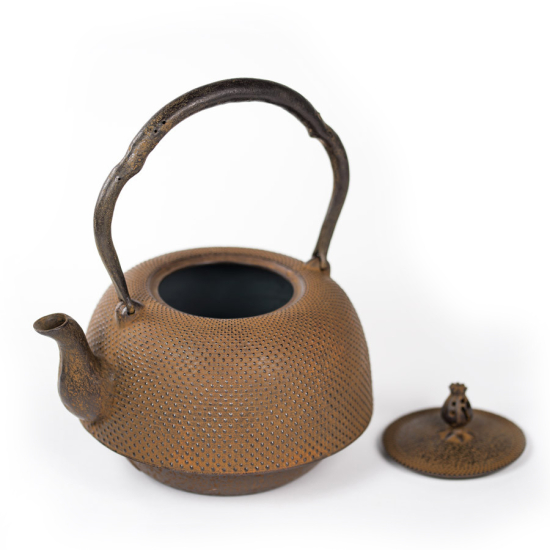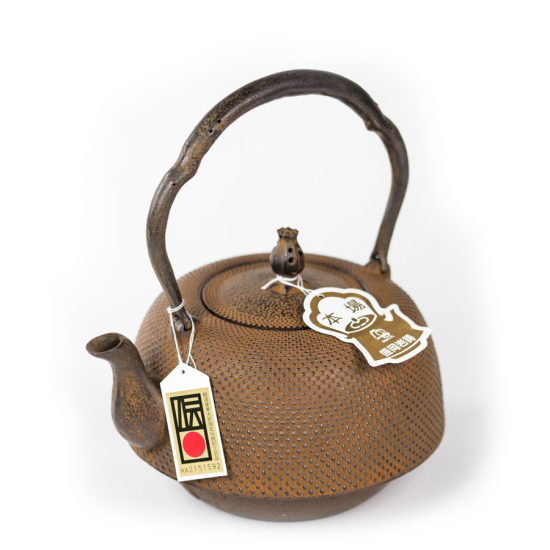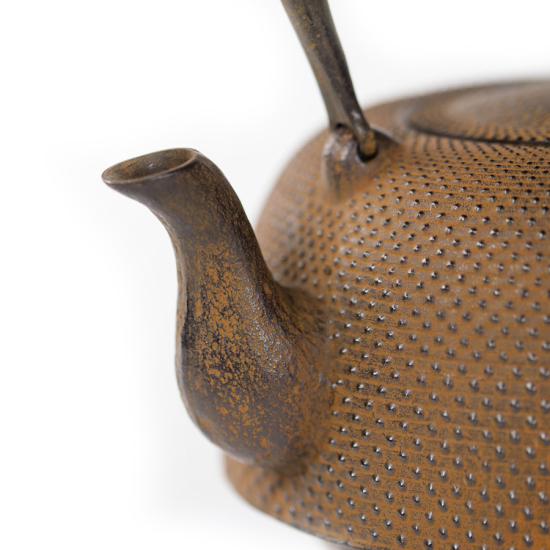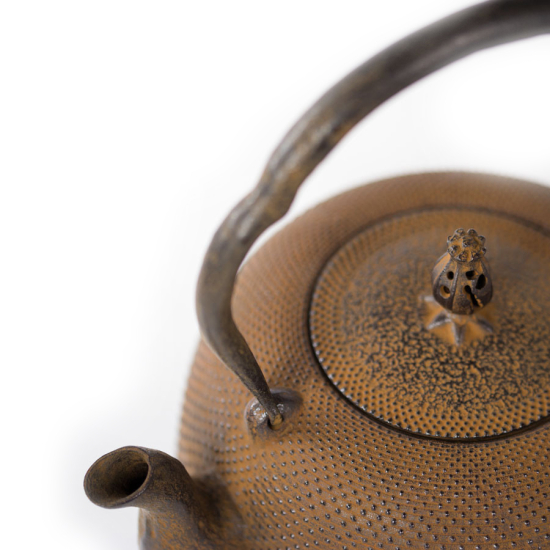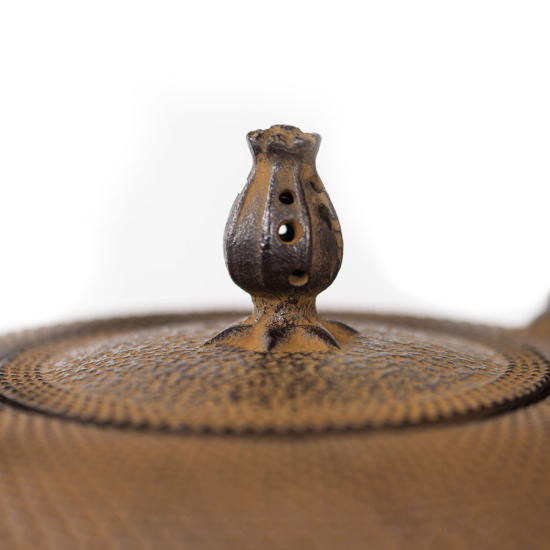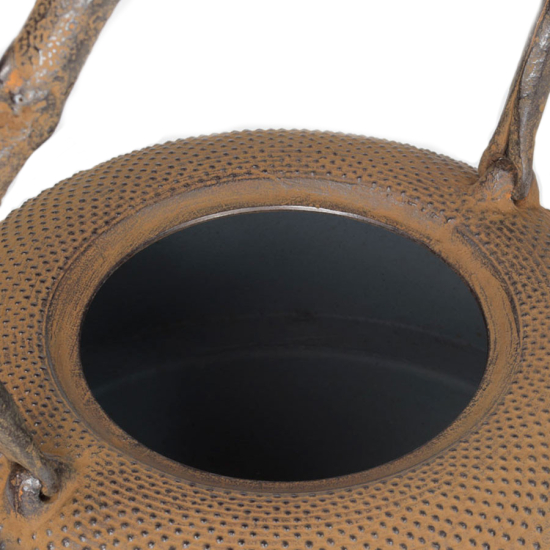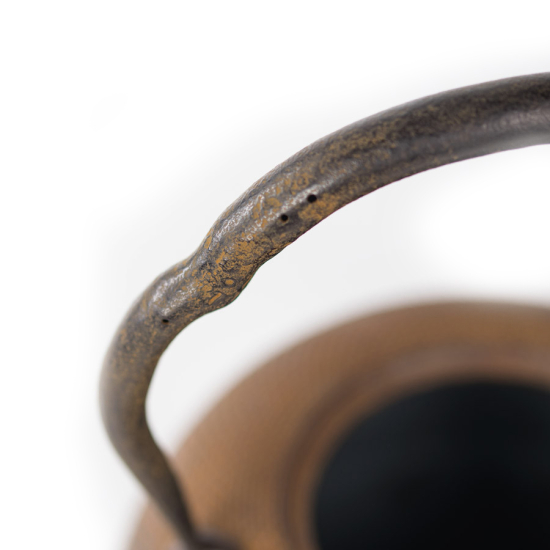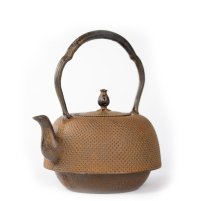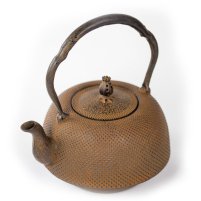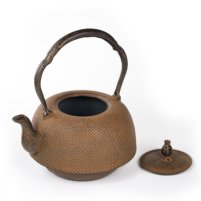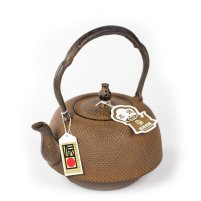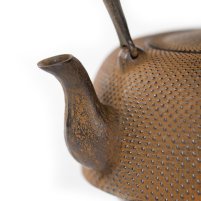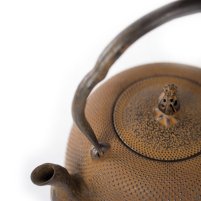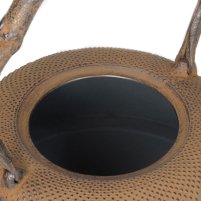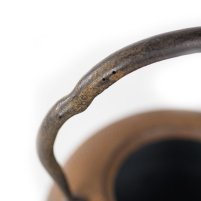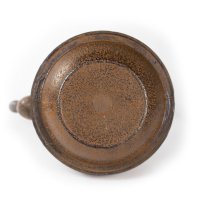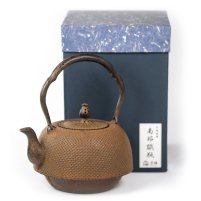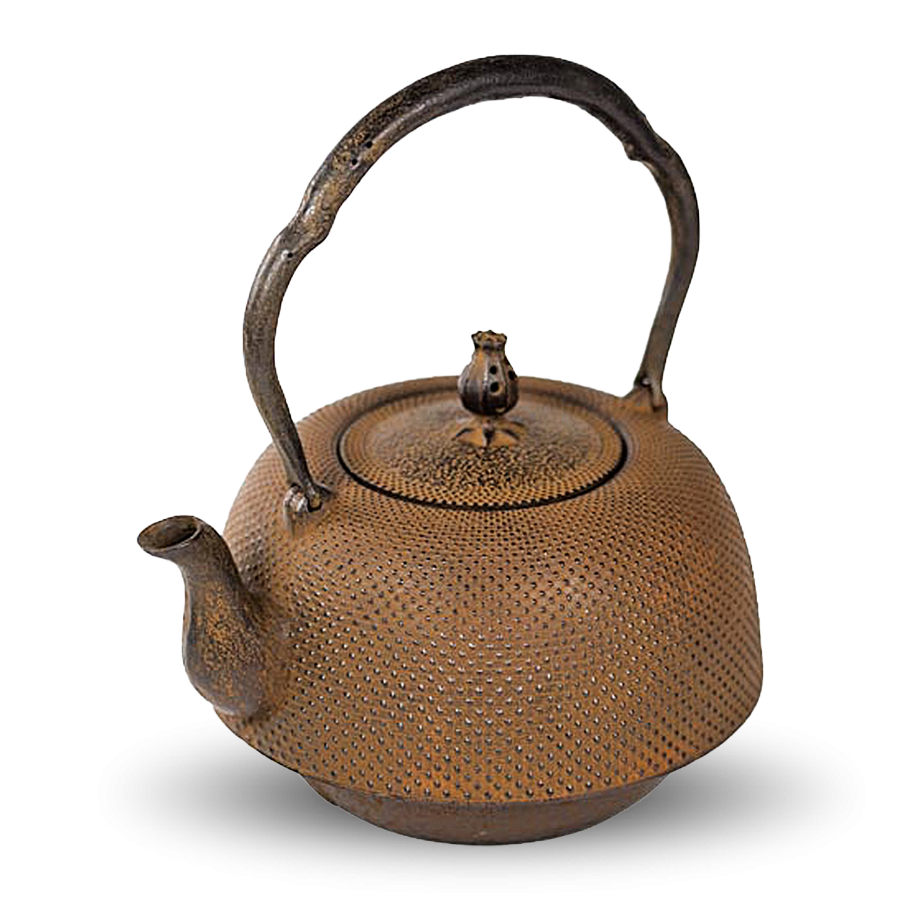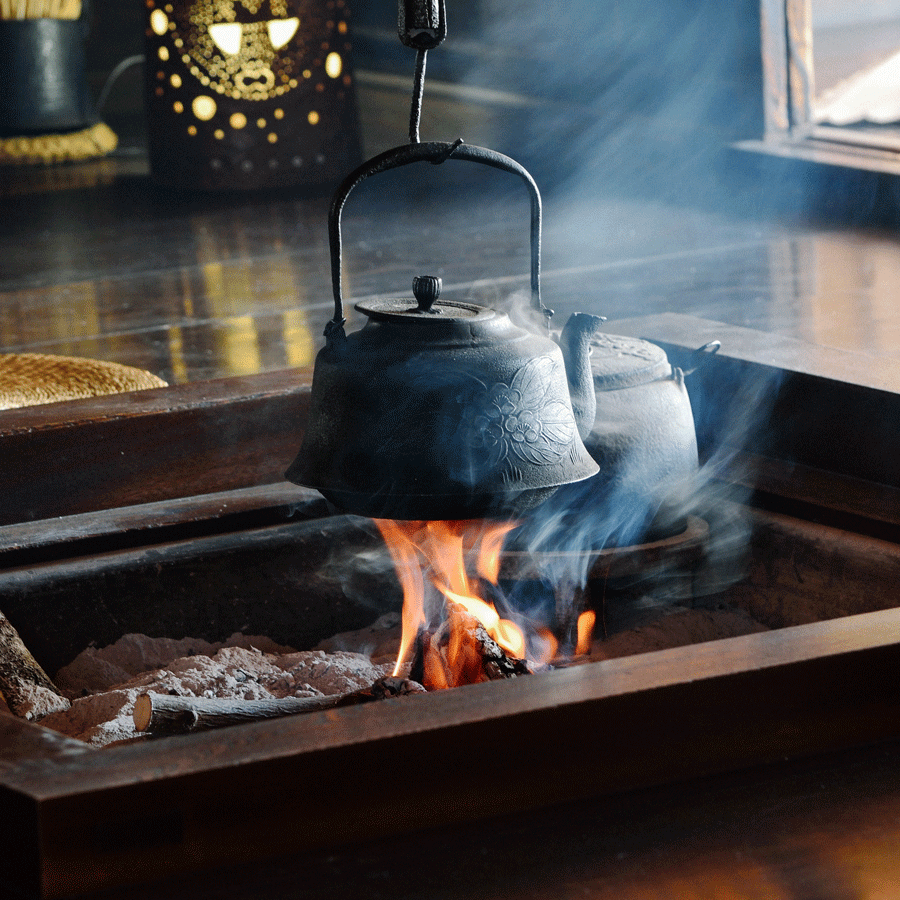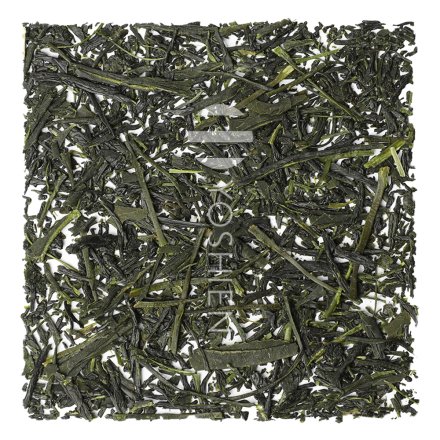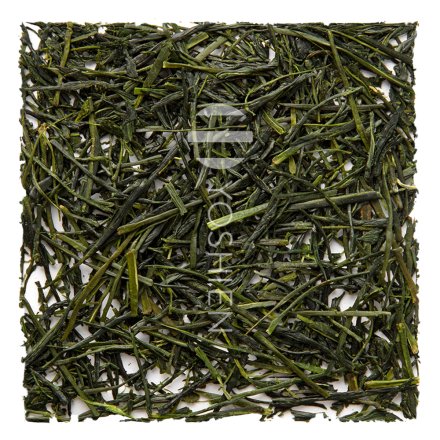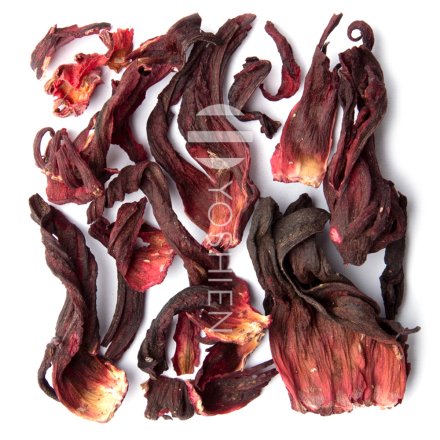The name Iwachu is synonymous with cast iron goods of the highest quality, and the brand's versatile product range extends from classic cast iron kettles (tetsubin), teapots (tetsu kyusu) and related accessories to bells, pans and much more. The manufacturer has boasted its own tradition since its founding in the Meiji period and throughout the 400-year-old Nanbu tekki tradition. It also has its own production line. Every step, from design planning to manufacturing to sales, is carried out by the company itself. Iwachu is dedicated to producing robust cast iron products with excellent functionality and contemporary design. Master casters at the company are required to undergo a minimum of 15 years of training, meaning that all products meet the highest quality standards.
Nanbu Tetsubin
Arare Chajiru
Iwachu
SKU
1752
A high-quality cast iron kettle (tetsubin) by Iwachu, a traditional Japanese manufacturer from Iwate, Japan, in the traditional, beautifully curved Nanbu style. This handmade masterpiece, used for boiling water, is iron permeable and features arare patterning (霰; hail) and a chajiru coating (tea extract) as well as rust protection through the use of elaborate kamayaki firing. 1.9L
| Type | Nanbu Tekki tetsubin |
| Origin | Morioka, Iwate, Japan |
| Studio/Artist | Iwachu |
| Maximum Capacity | 1.9L |
| Dimensions | 21 x 18 x 24cm |
| Weight | 2.2kg |
| Material | Cast iron |
| Pattern | Arare pattern (霰; hail) |
| Coating | Fired at 900°C to form a protective inner membrane against rust (釜焼き仕上げ; kamayaki technique). Urushi coating on the outside |
| Stove Use | Suitable for use on electric stovetops as well as over small to medium gas-powered flames |
| Strainer | No strainer |
| Artist's Stamp | Iwachu stamp |
| Packaging | High-quality gift box from Iwachu |
In stock




